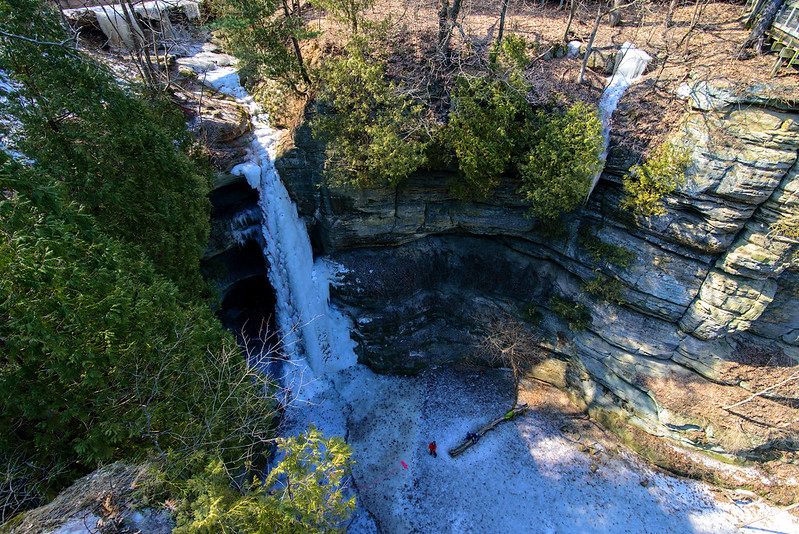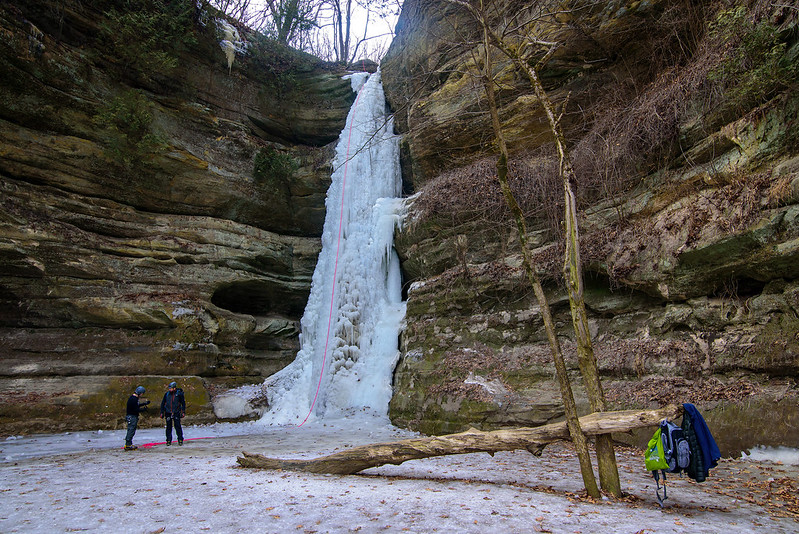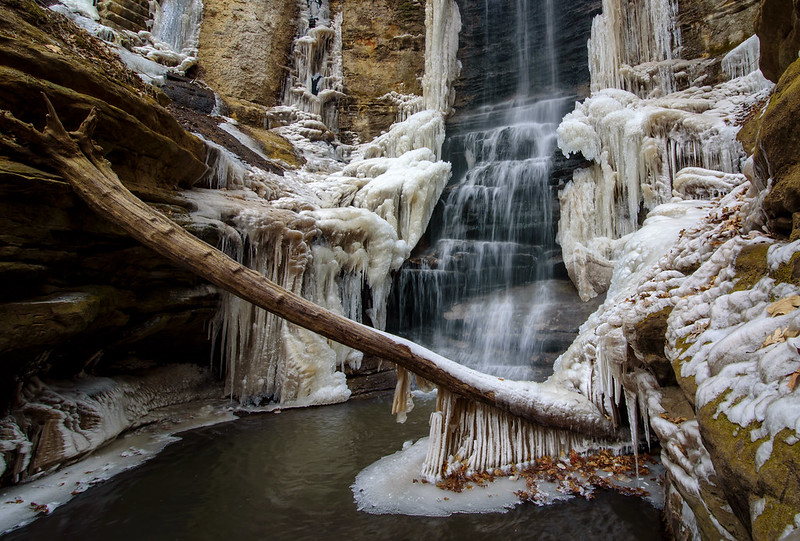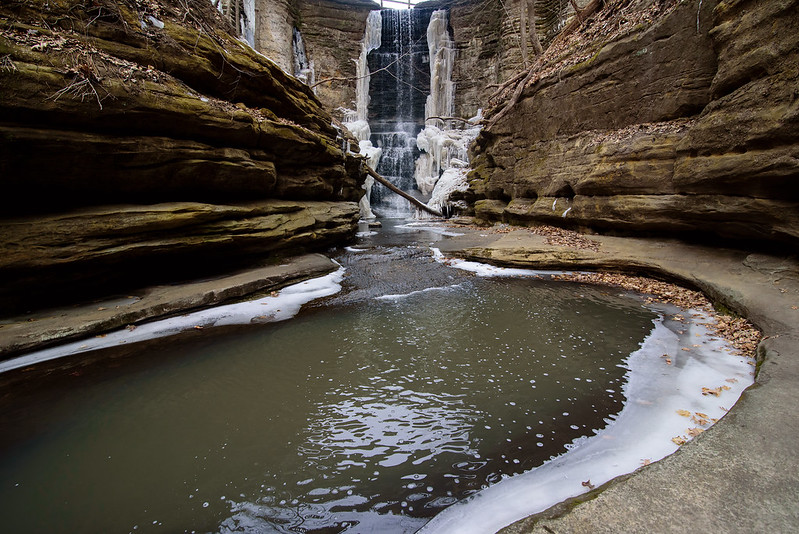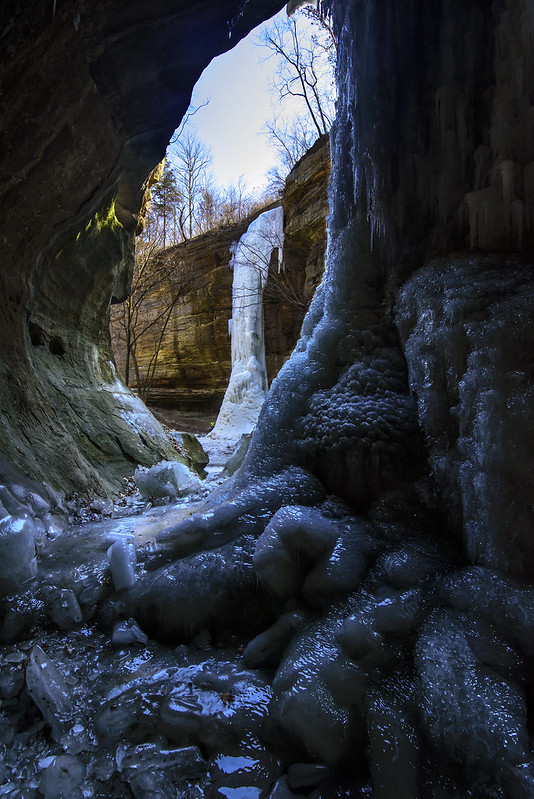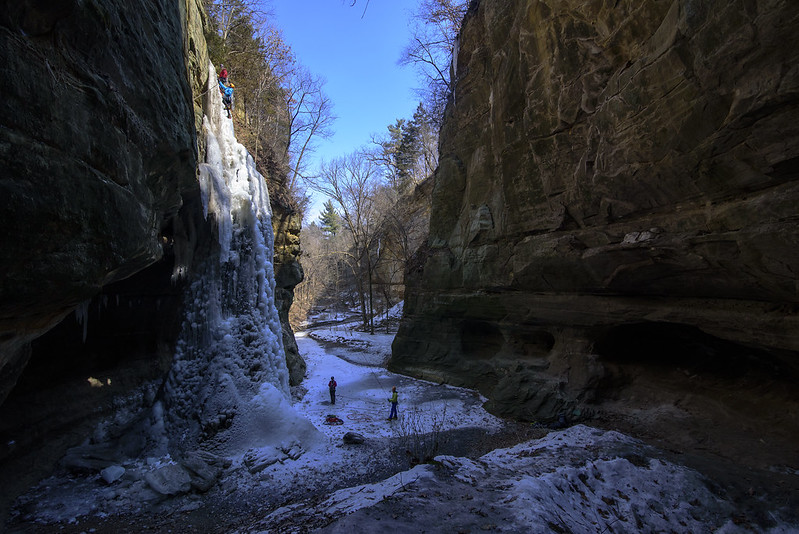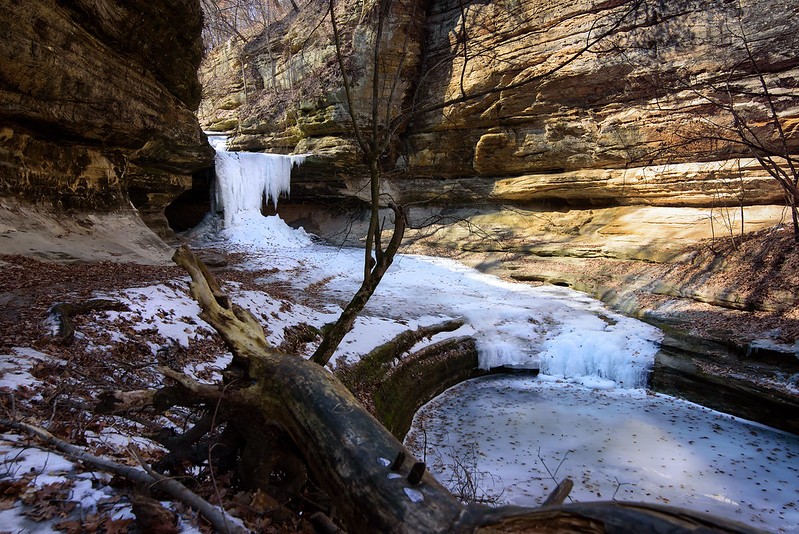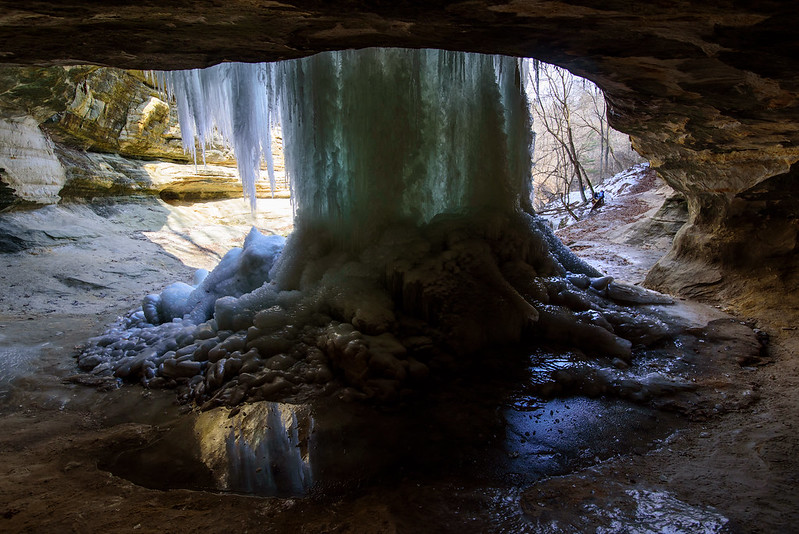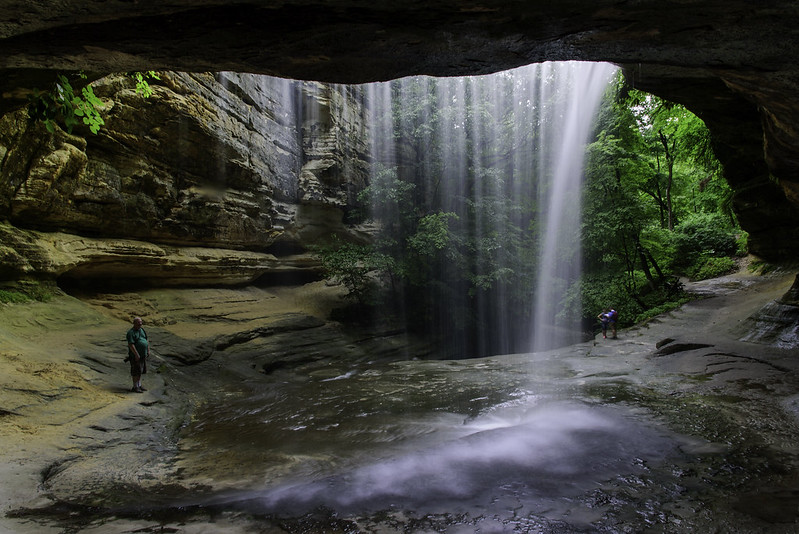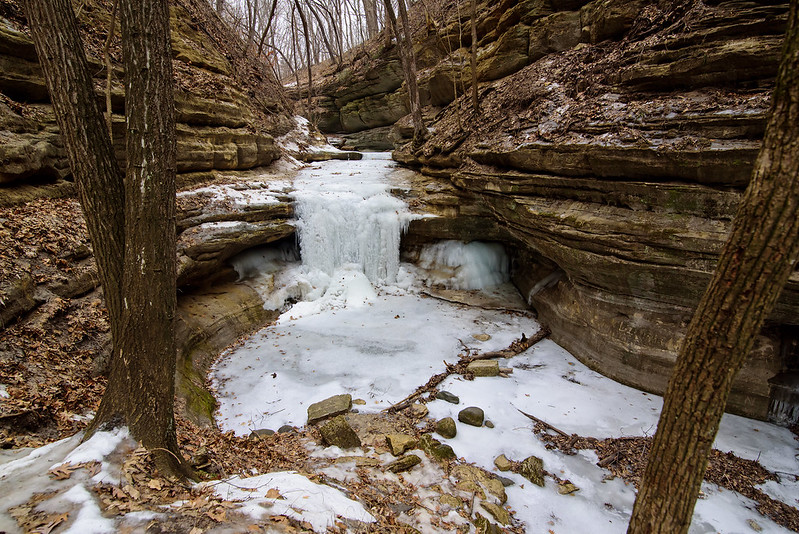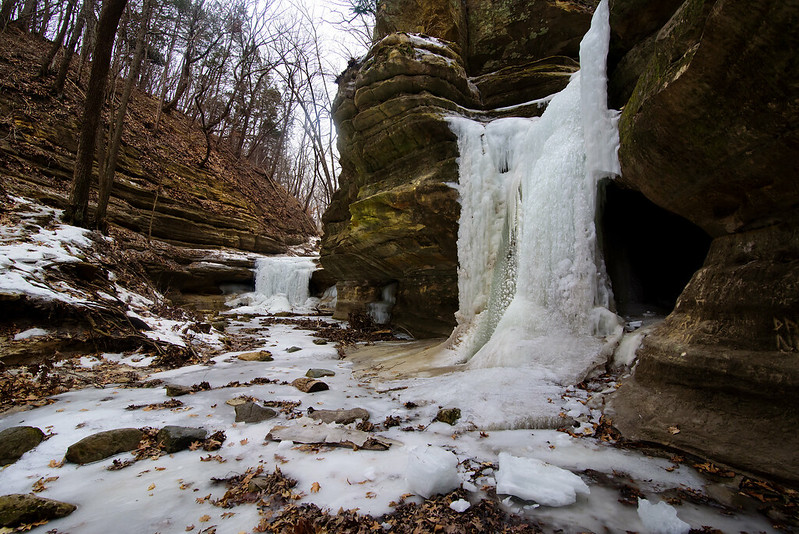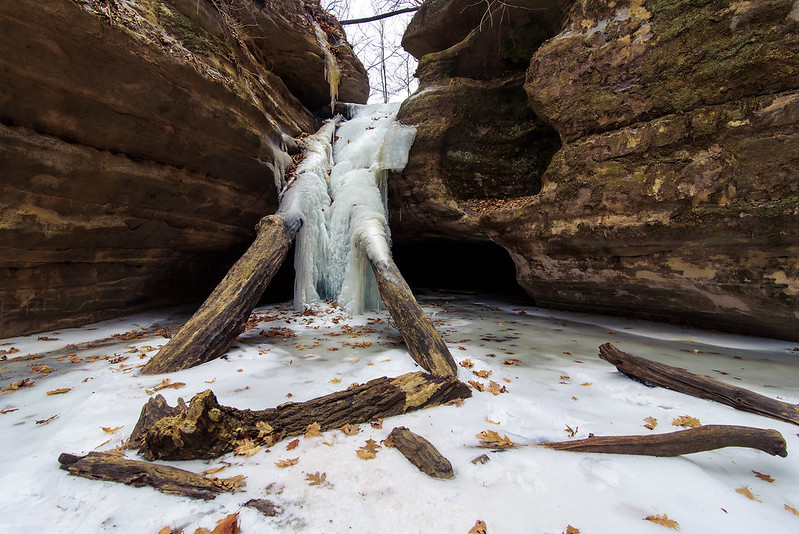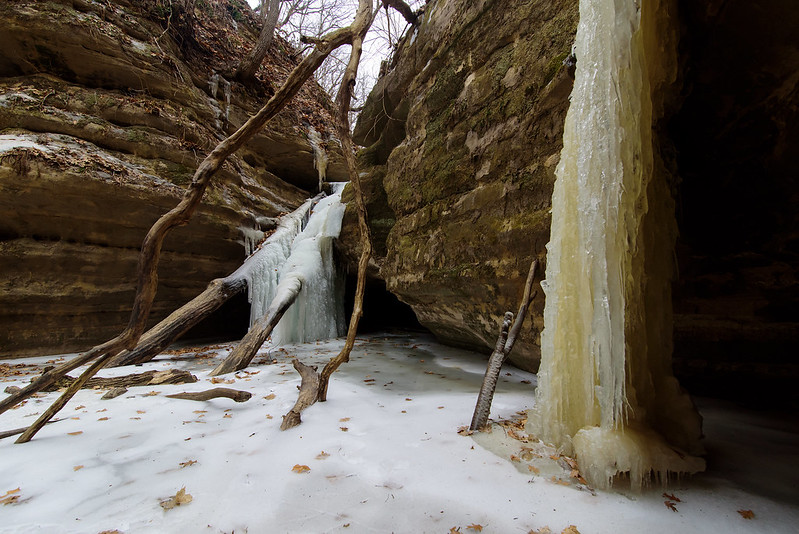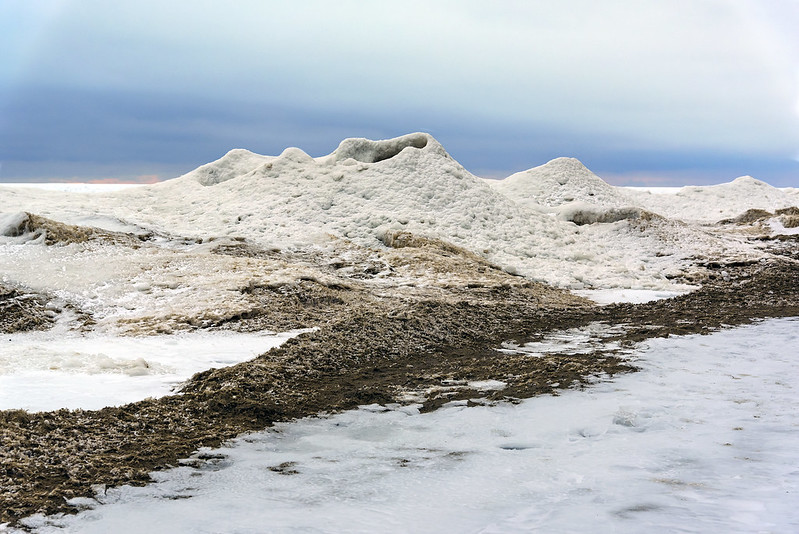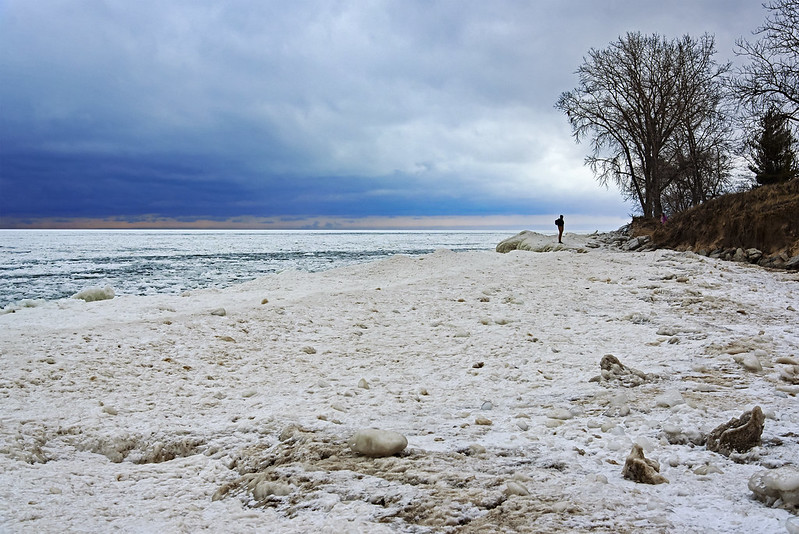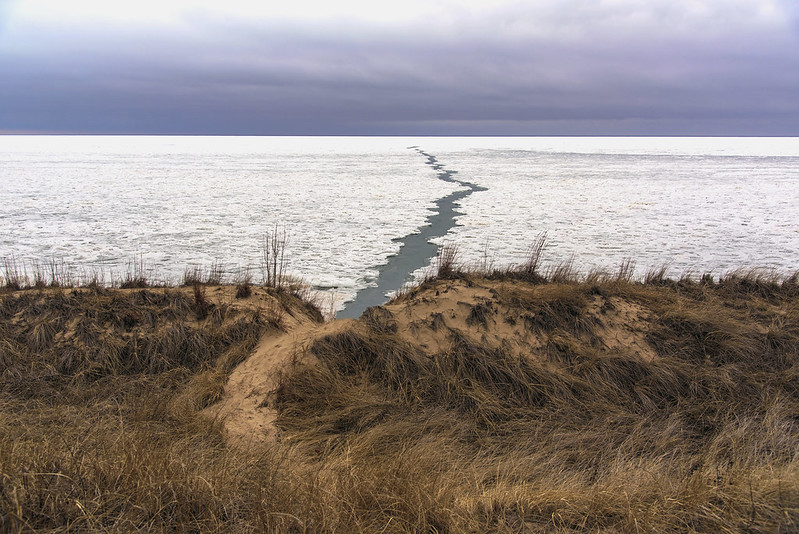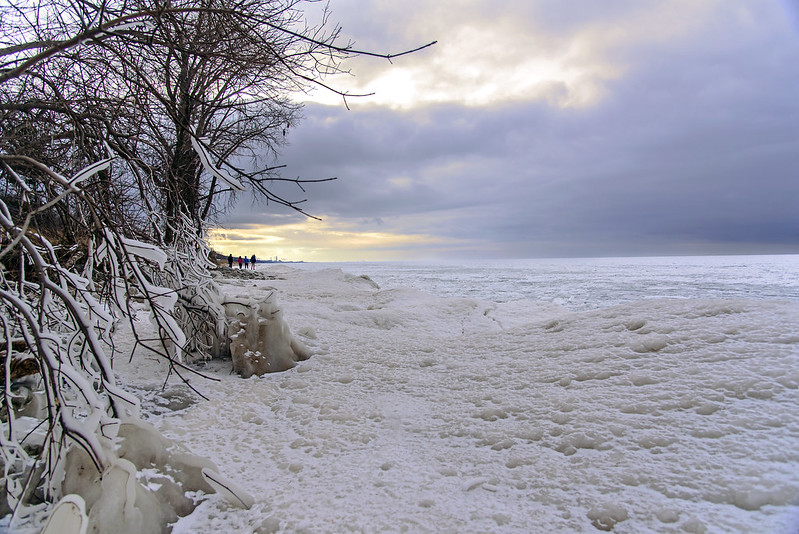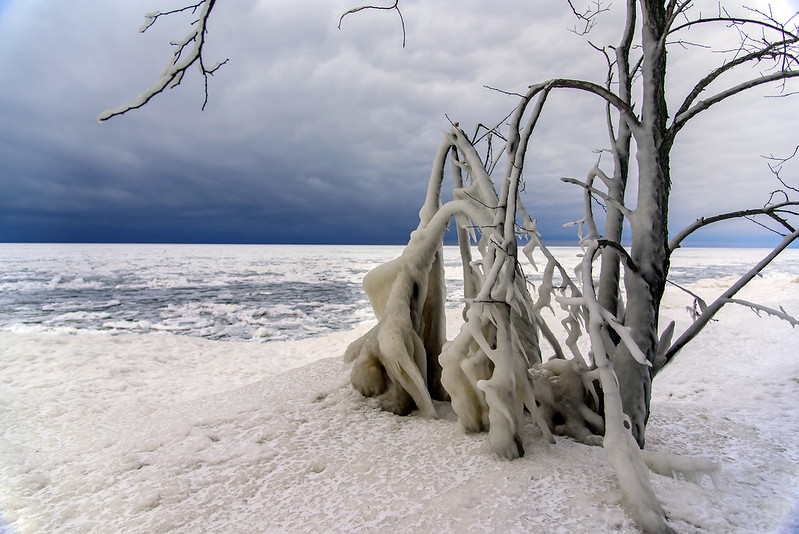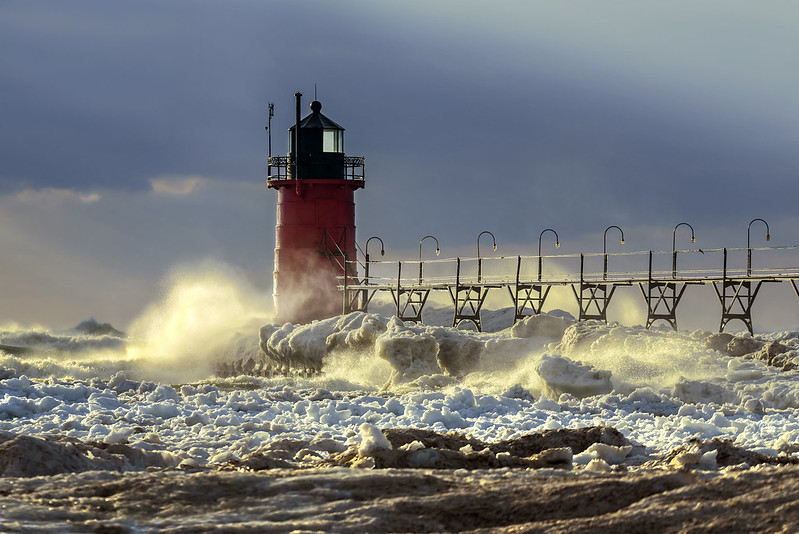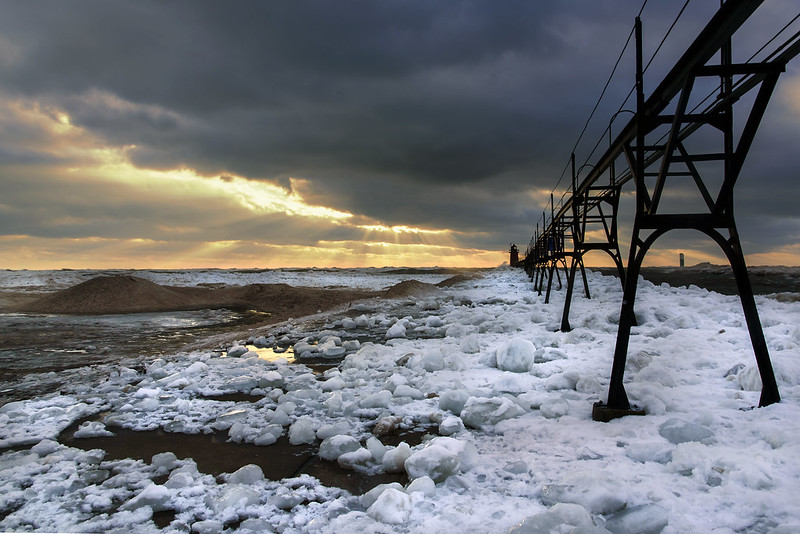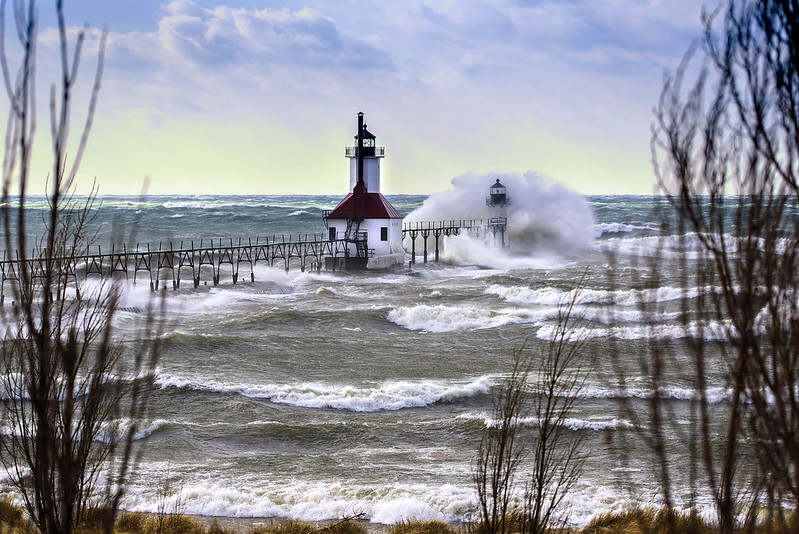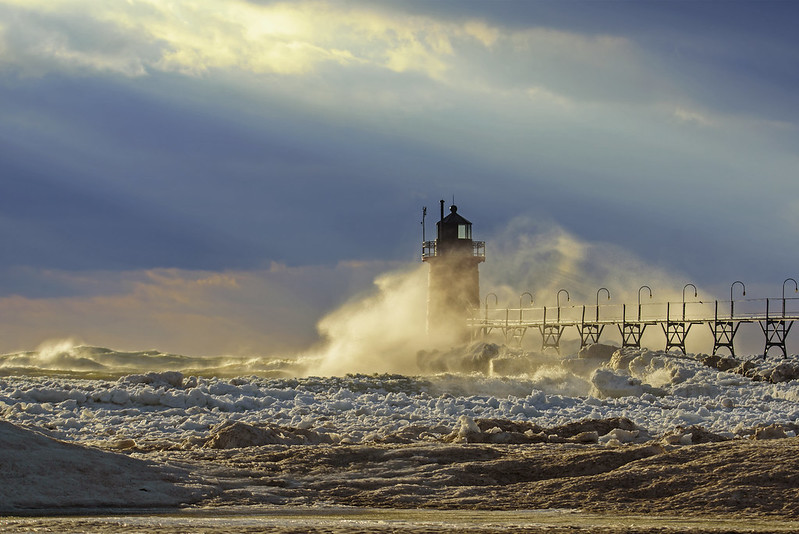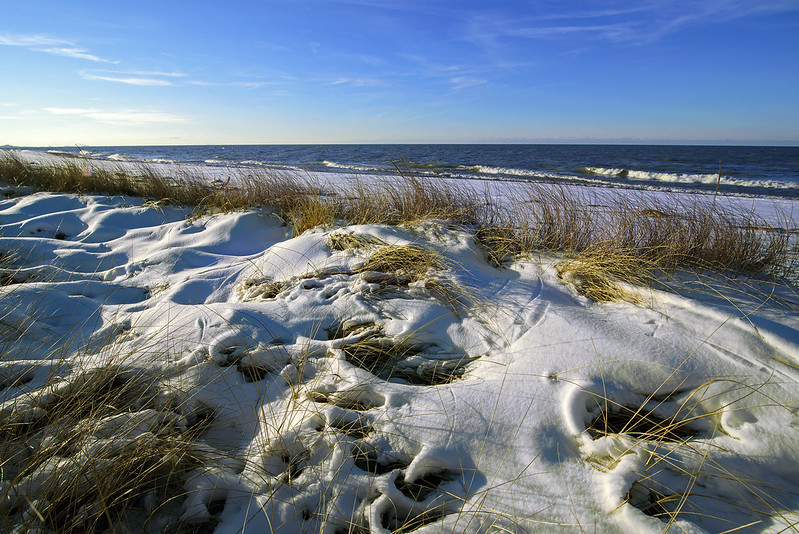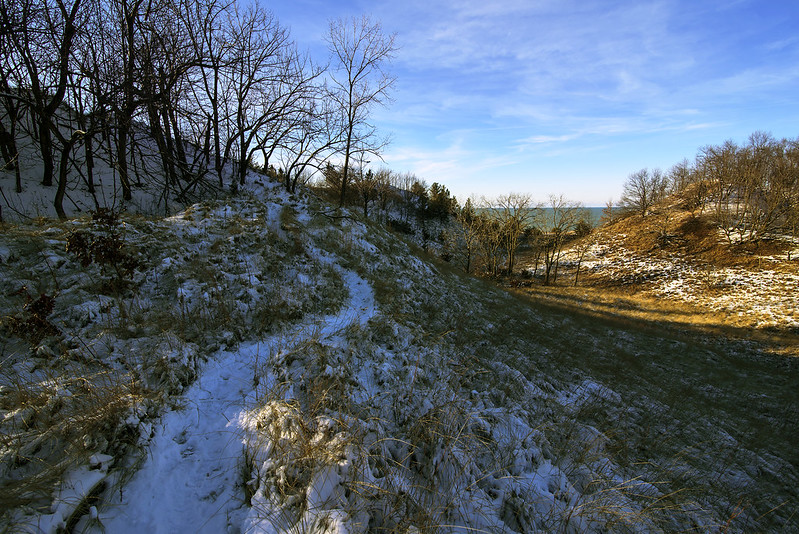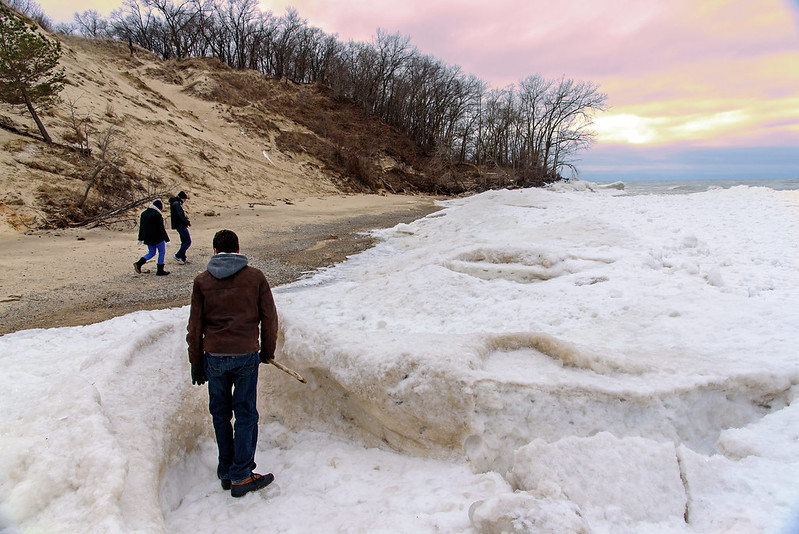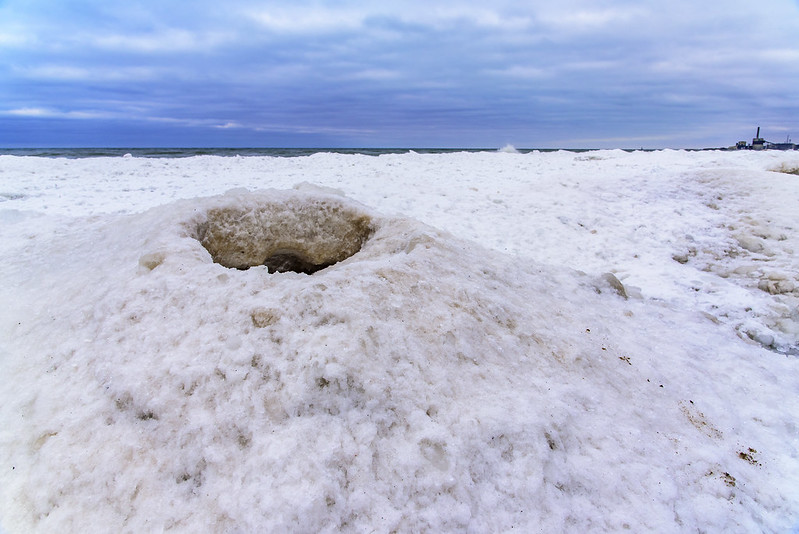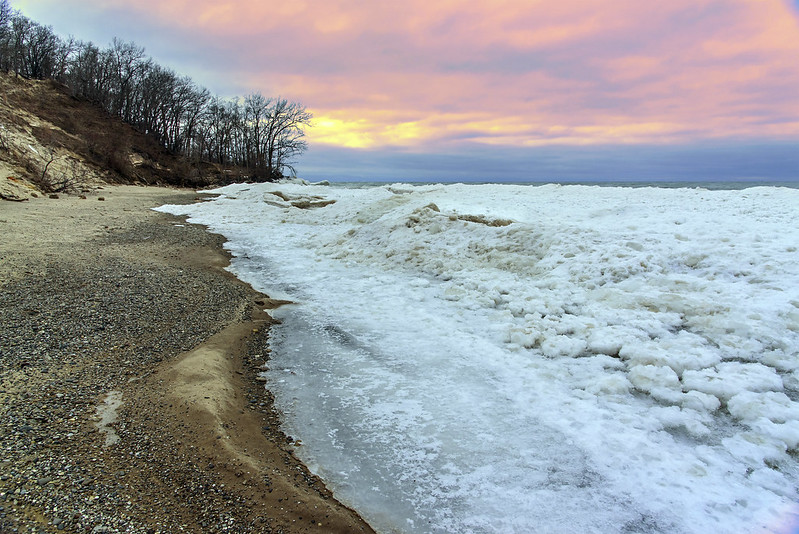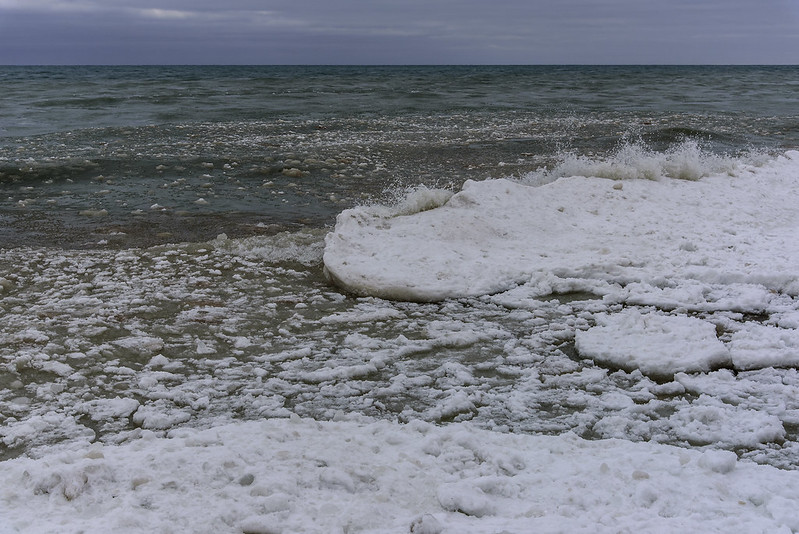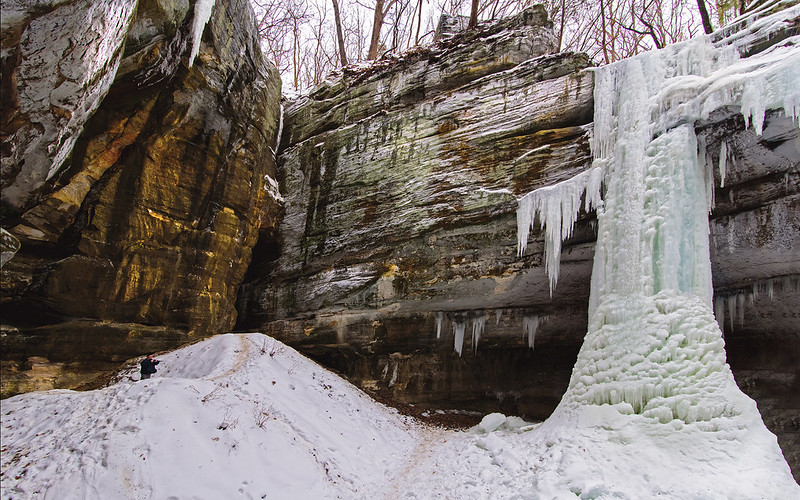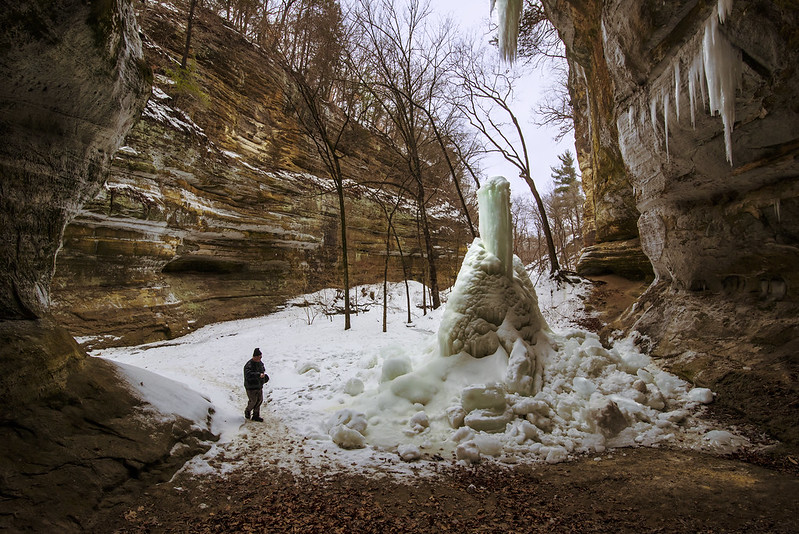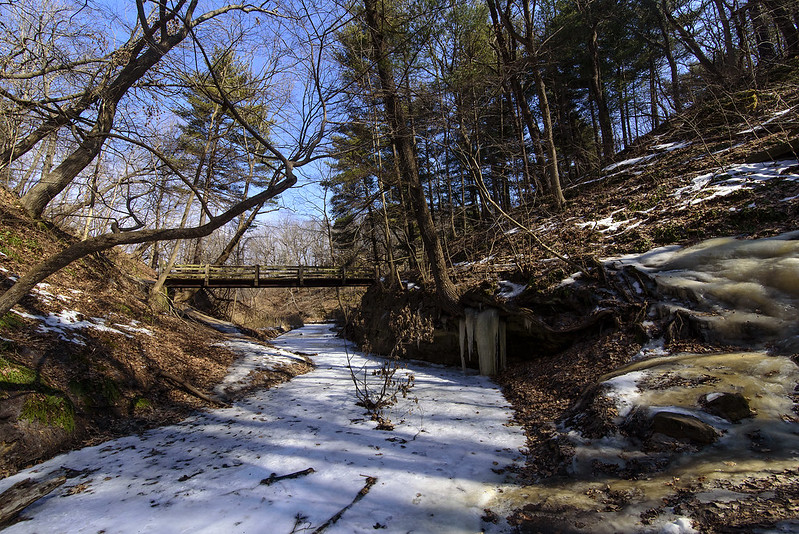 >
>A little over a week before spring, the frozen canyons of Illinois receive a day of sunshine, the beginning of the warm up that would quickly melt the remaining ice and snow. Temperatures began to climb into the 40s while hiking through Tonty Canyon, in Starved Rock State Park. Crackling sounds were echoing off the rock walls, from the ice moving, cracking, and falling as it warmed up.
A few more hours of sunshine, and the creek would soon be a hazardous place to walk, the ice would soften enough for someone to fall through. This would most likely be the last time for walking on the frozen stream that cuts through the narrow canyon.
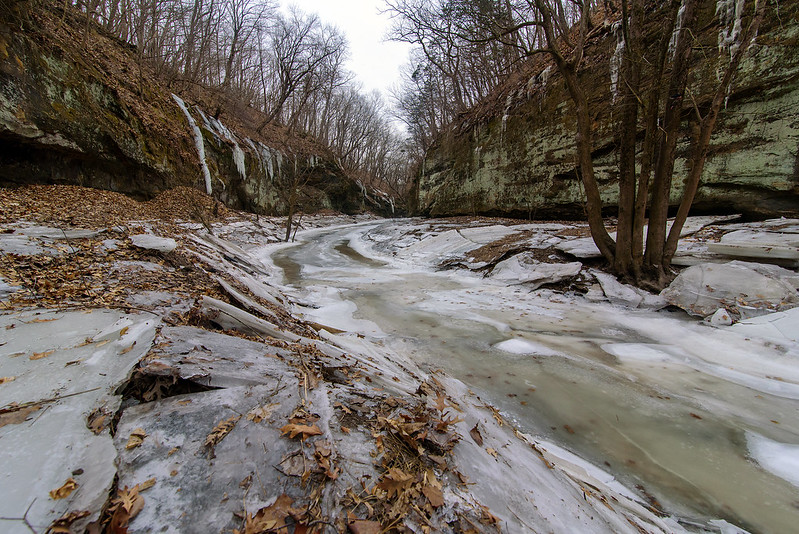
The stream in Matthiessen Park's upper dells was also frozen on this day. Evidence of times with higher water could be seen along the bank of the stream. Large blocks of ice litter the area, once the top layer of ice on the water when the stream was flooded. Once the water level lowered, the ice lost support, cracked and fell to the canyon floor. These blocks of ice were around five inches thick, and some as long as 10 feet.

